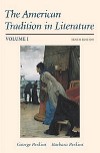You can read the following poems by consulting your textbook or, in some cases, clicking on the titles. The e-notations provided below offer links to sites that offer background or otherwise illuminate the works. Enjoy! "Buffalo Bill's" See page 1108 in The American Tradition in Literature, Volume II, 10e See page 1594 in The American Tradition in Literature, Shorter Edition, 10e - William F. "Buffalo Bill" Cody is among the most fascinating characters of the American West. A soldier, hunter, showman, actor and author, Cody lived a remarkable life that was only inflated by the myths and legends that grew up around him. To learn more, visit the online Buffalo Bill Museum.
- This poem is an "apostrophe." For a definition of this and other poetic terms, visit this online poetry glossary.
"Plato Told" See page 1115 in The American Tradition in Literature, Volume II, 10e See page 1601 in The American Tradition in Literature, Shorter Edition, 10e - This poem makes reference to several historical figures. Here are some links to more information about them: Plato, Jesus, Lao Tsze, William Tecumseh Sherman. See if you can determine the idea or sentiment that connects these men, and which explains their inclusion in the poem.
- To get a sense of what Cummings means by "nipponized," click on this definition of the word "nippon."
- It is nearly impossible to understand fully the end of this poem without knowing some historical background about the "old sixth avenue el." This elevated railway ran for years in New York City, along sixth avenue. It was torn down in the 1930s, and the metal was sold to the Japanese. This metal was turned into armaments such as bullets, bullets which, presumably, were fired during World War II to fight against American soldies such as the one the narrator describes. As a starting point to learn more about World War II, look at this extensive timeline.
|



 2003 McGraw-Hill Higher Education
2003 McGraw-Hill Higher Education